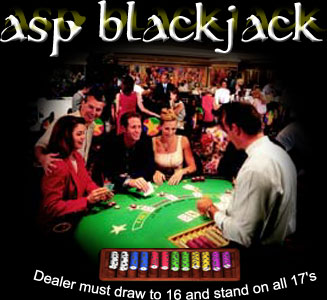

|
This game of BlackJack is designed to be one person against the computer. Not a multiplayer/multihand system. It is also for "Entertainment Purposes Only". Perhaps that will be released at a later time as a new version, but regardless keep in mind right now you are only playing one on one against the dealer. Secondly I am not going to include any split options or insurance options at any point during the game. It is going to be very straight forward and to the point. Black and white blackjack. Both your cards are going to be presented to you face up. You will be given a house comp. of $100.00 to get you going. Use it wisely because after that your on your own. The object of this game is similar to my other game damn dice in that you want to obtain the highest earnings and then cash out. You will be listed in a BlackJack High Stakes Club if your cash out figure qualifies. Therefore that is the object of the game. For those of you who are a little bit foggy on the Rules of Blackjack heres a quick overview for you: The basic premise of the game is that you want to have a hand value that is closer to 21 than that of the dealer, without going over 21. Other players at the table are of no concern. Your hand is strictly played out against the hand of the dealer. The rules of play for the dealer are strictly dictated, leaving no decisions up to the dealer. Therefore, there is not a problem with the dealer or any of the other players at the table seeing the cards in your hand. In any event, when you're just learning to play, don't hesitate to show the dealer or other players your cards and ask questions.
In blackjack, the cards are valued as follows: A hand that contains an Ace is called a "soft" total if the Ace can be counted as either 1 or 11 without the total going over 21. For example (Ace, 6) is a soft 17. The description stems from the fact that the player can always draw another card to a soft total with no danger of "busting" by going over 21. The hand (Ace,6,10) on the other hand is a "hard" 17, since now the Ace must be counted as only 1, again because counting it as 11 would make the hand go over 21.
How the dealer plays his hand
|